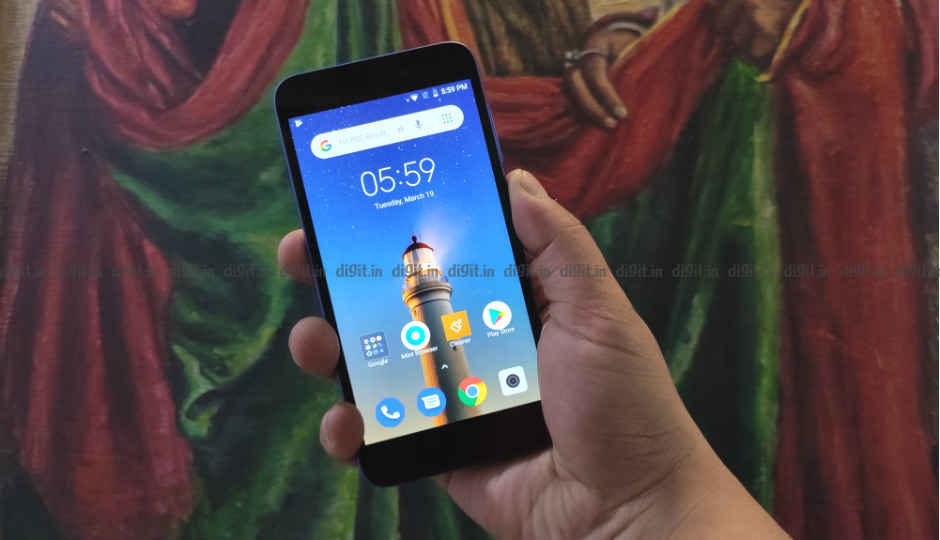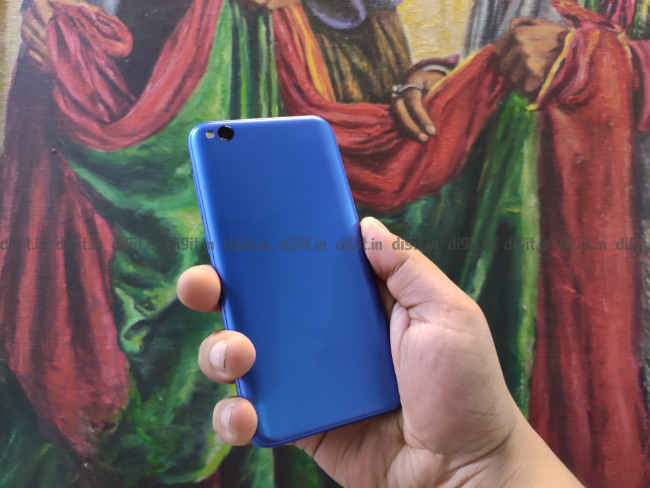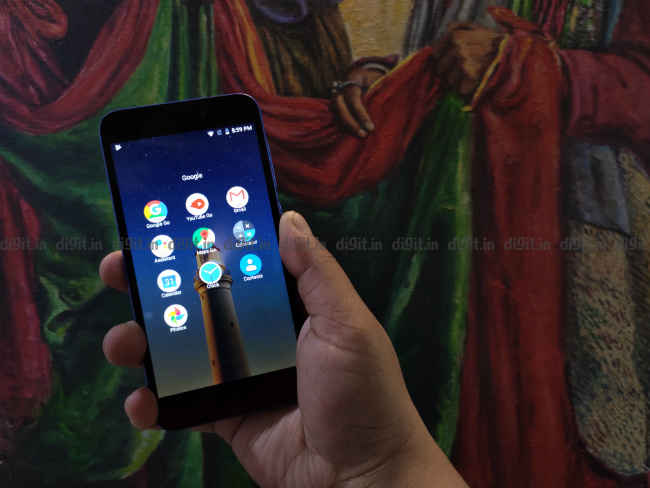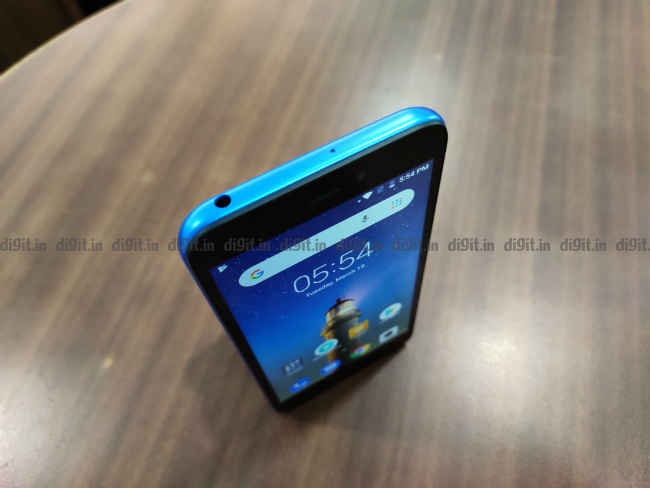Xiaomi Redmi Go first impressions: Smartphone made for feature phone users
As far as Android Go devices go, the Redmi Go is perfectly packed with features. With a lower price, it might just be able to convince feature phone users to upgrade.

While all the major smartphone makers are highly bullish about the Indian market, India is still predominantly a feature phone market. Just a week back, Counterpoint Research claimed 66 percent of the Indian phone market is owned by feature phone manufacturers, while smartphones make up 44 percent of the market. For a brand to grow, it will have to target the feature phone market and convert feature phone users into smartphones users. However, because of the high cost of entry into smartphones, most feature phone users refrain from upgrading, especially considering that entry-level phones have not been able to deliver stable and reliable performance. Last year, though, Google attempted to make the transition a lot smoother with Android’s Go Edition, a lightweight OS designed specifically for entry-level smartphones with minimal hardware. This led to a new crop of smartphones that run on entry-level hardware and Android Oreo (Go Edition) and the Xiaomi Redmi Go is part of that bandwagon which aims to entice feature phone users to spend a little more and get a smartphone instead.
 Survey
SurveyThere are multiple obvious advantages of upgrading to a smartphone, but the primary reason most feature phone users have held back is the cost of entry. The Redmi Go should be good news for those users since it is one of the cheapest Android Go phones to buy. The Redmi Go is priced at Rs 4,499 and that is perhaps the primary reason to buy the phone. We used the phone for a while after the launch and here’s what we thought of it —
Barebones design that looks durable
The Redmi Go doesn’t have the design chops the new Redmi phones now come with. There’s no gradient colours, no edge-to-edge display or dual cameras. Instead, you get a barebones candybar design that looks retro at best. Honestly, you can’t really expect anything more in this price and Xiaomi had to take steps to keep the costs of manufacturing low. Nevertheless, the Redmi Go has capacitive navigation buttons, no fingerprint sensor, a single speaker at the bottom along with a headphone jack and a dual-microphone array for noise cancellation while calling. The display on the front has thick bezels on each sides while the rear brushed metallic panel is totally devoid of features other than a single camera unit and a flash. The Mi logo on the bottom is barely visible on the blue variant that we used.
While the phone’s design may not draw attention, it seemed quite durable thanks to the metal rear panel. It’s also curved around the edges giving a good grip.
Lacklustre display that’s enough to get by
The Redmi Go packs a 5-inch LCD display with HD resolution. The 720p panel is usable when indoors and while outdoors in the day, the panel was barely visible. The display is just good enough for watching videos on YouTube, but you won’t get the vivid colours we have come to expect from more expensive Redmi phones. Having said that, there’s a blue light filter to protect your eyes, auto brightness and ambient display that discretely shows incoming notifications when the phone is locked.
Seemingly smooth operation thanks to Android Go
For the little while we used the Redmi Go, it did feel quite smooth and responsive. Despite having just 1GB of RAM, the phone seems well-optimised for executing frequent tasks like opening up the dialler, doing a Google search, speaking to the Assistant and more. We did try to install PUBG Mobile and play, but the game is obviously not supported. However, we did play Subway Surfer without much of a hitch.
The Redmi Go runs on Android Oreo (Go Edition) and not the latest Android Pie (Go Edition) which is weird. Furthermore, it seems like the phone runs on stock Android Go OS, but delving deeper, we found that it’s running on a custom launcher called Mint Launcher. The launcher app comes with its own suite of apps like a dedicated browser even when there’s an optimised version of Chrome and other Go apps like Google Go, YouTube Go, and more. Xiaomi claimed you can use Google Assistant in Hindi, English and Hinglish, but when we used it, the Assistant was not able to speak in Hindi. Some other Lite apps like Facebook Lite come pre-installed and we also noticed Xiaomi’s Mi Community and Amazon Shopping app pre-installed on the phone. Thankfully, the latter two can be uninstalled to save space.
Speaking of which, the Redmi Go comes with 8GB of onboard storage and you have the option to expand it up to 128GB using a dedicated SD card slot. The phone also supports Dual SIM with LTE connectivity. For performance, the Redmi Go relies on the Qualcomm Snapdragon 425 SoC under the hood. Frankly, we expected Xiaomi to use a newer chipset in the Redmi Go as the Snapdragon 425 has been in use for quite some time now. But then again, Xiaomi must have placed a bulk order of the chipset and acquired it at a lower price which allowed them to make the Redmi Go so affordable.
Disappointing camera
Finally, the Redmi Go comes with a 8MP camera on the back and a 5MP shooter on the front for selfies. There’s no AI scene recognition or portrait mode in the camera, but the phone does offer around seven manual scene modes that you can choose yourself to apply in certain situations. There’s a variety of filters to use. The photos, however, are decent enough for the price. Although, you can’t expect crystal clear shots from this one. It was quite fast to capture the photos, though.
The front camera has Xiaomi’s AI beautification that studies facial points to apply beauty effects. While we didn’t try it out at the launch, we did see the camera’s auto HDR mode kicking in when there’s a lot of background light.
While we understand there’s only so much you can do to make the camera interesting in that price range, the Redmi Go’s biggest drawback seems to be the camera quality. We will be testing it out further for a definitive answer.
First Impressions
As far as Android Go devices go, the Redmi Go is perfectly packed with features. It’s just as powerful as other Android Go phones in the market, but it’s lower price should ensure the phone sells well in the market. Xiaomi is targeting the feature phone users with this, and for Rs 4,499, it seems like a worthy upgrade. The phone itself is quite barebones and won’t make any heads turn, but considering the market it’s aiming for, the Redmi Go doesn’t have to do any of that and still win, solely for the lower price.


